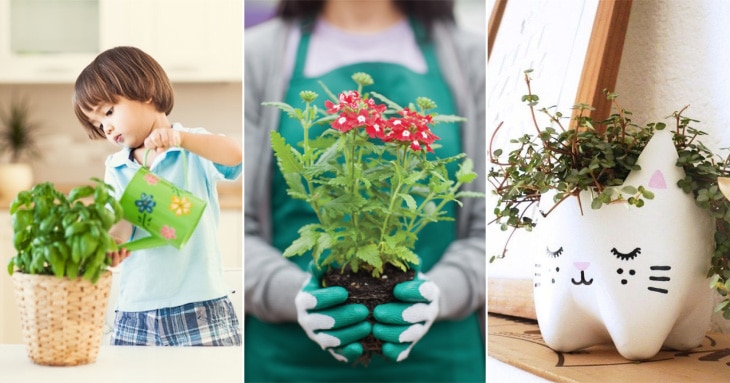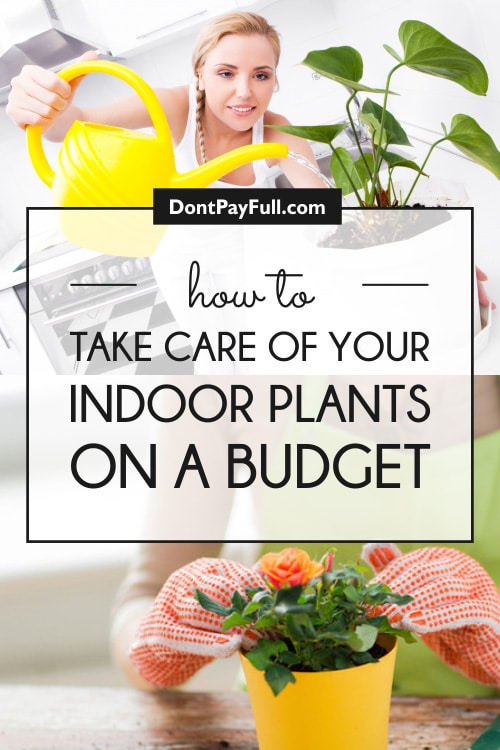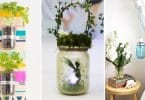Keeping your indoor plants looking their best isn’t difficult to do, but when you want to do something special for them, you’ll find a lot of pricey and unnecessary products on the market.
Find out how to keep your plants looking great with these cost-saving tips:
Judge watering without a ‘sensor’
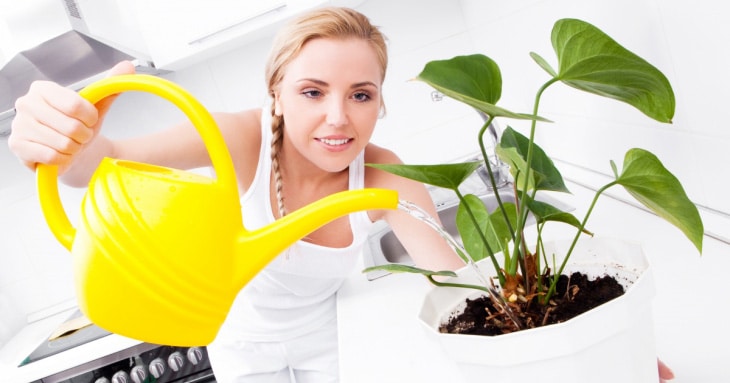
Don’t overwater your plants! It’s bad for them and also for your pocket!
The electronic sensors you stick into a pot to test whether your plant water needs are a waste of money. They’re not always correct either. You can gauge when to water much more accurately and effectively with your own fingertip. Here’s how:
Most plants want soil that feels damp, like a squeezed out sponge. Soggy soil is a killer unless you’re growing marsh plants. For example, insectivorous plants want soggy soil. You can achieve that by placing their pots in an outer sleeve or container and filling it with water to just below the waterline.
The rest of your plants don’t want too much water, but you don’t want them to die of drought either.
- Feel the surface of the soil. If it feels slightly damp, your plants don’t want water yet.
- If the surface is dry, dig your finger into the soil at the side of the pot to the first joint of your finger. If there is a sensation of moisture, your plant can probably wait another day or two. If not, it’s time to water.
- Learn to gauge the wet and dry weights of your pots. After watering and allowing the plant to drain, pick up the pot. It feels heavy. When you think it’s time to water after using the ‘feel’ test, pick up the pot and feel how light it is. Once you get the hang of this, you don’t even need to feel the soil.
Cacti are the other exception to the rule. Get specialist advice on watering since different species have different requirements, but succulents can usually fit in with the regime described above.
Cleaning and shining leaves
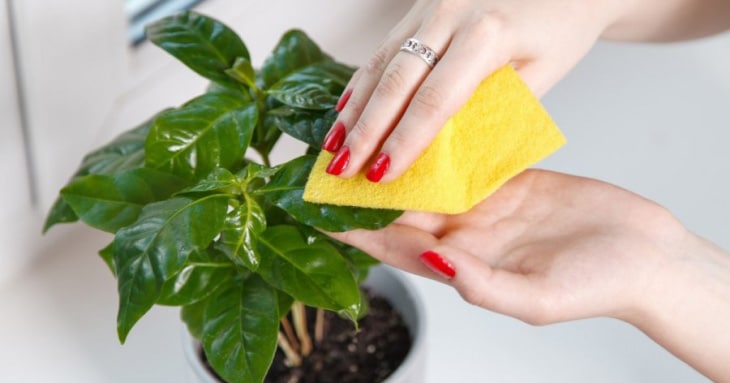
Wipe your plants’ leaves to allow them to breathe!
Instead of buying expensive leaf polish to shine up the leaves of foliage plants such as peace lilies, try this. Pop your plant in the shower and give it some ‘rain’. If you decide to rinse its leaves outdoors, don’t leave it there – the sun might burn its leaves.
If you want some extra shine, dampen a sponge with milk and gently wipe each leaf. This will bring up the natural gloss of the leaves without hurting your plant, and you just saved a few bucks on a product you don’t really need. A wipe down with – of all things – mayonnaise is even better.
Make your own plant food
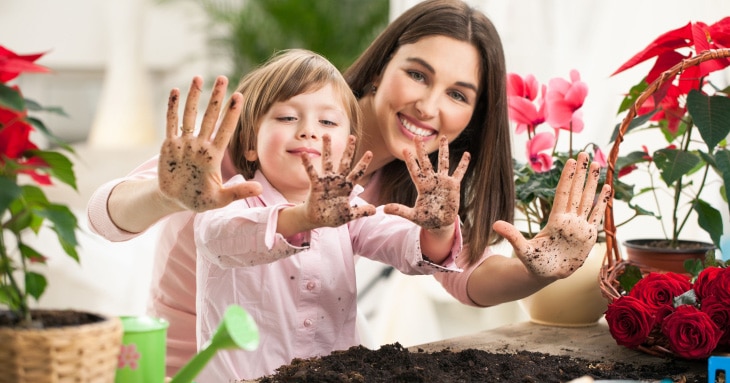
Grow your own herbs at home to save money!
Indoor plants need regular feeding. Although proprietary plant foods are convenient, you can make your own plant food at home using this easy recipe:
- Tsp Baking powder
- Tsp Epsom salts
- Tsp Saltpeter
- ½ Tsp Ammonia
- 1-gallon water
Water your plants with the mixture once a month.
If you have an aquarium, feed your plants with the water you would usually throw out when you clean your fish tank – it’s great for plants!
Potting mixtures
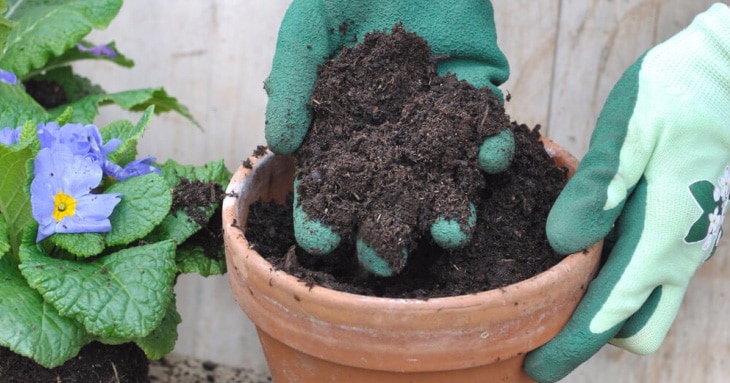
Make sure you are using great soil for your plants!
Making a potting mixture is quite a scientific process. It’s better to use a commercial potting mix, particularly while your plants are small. Never use garden soil in a pot, it tends to set hard and drain poorly.
However, if you have good compost or leaf mould in your garden, you can use this for potting over larger, less sensitive plants. Mix it with some river sand and run water through it several times to wash out any high concentration of salts that might be present before using it.
Re-wetting dried out potting soil
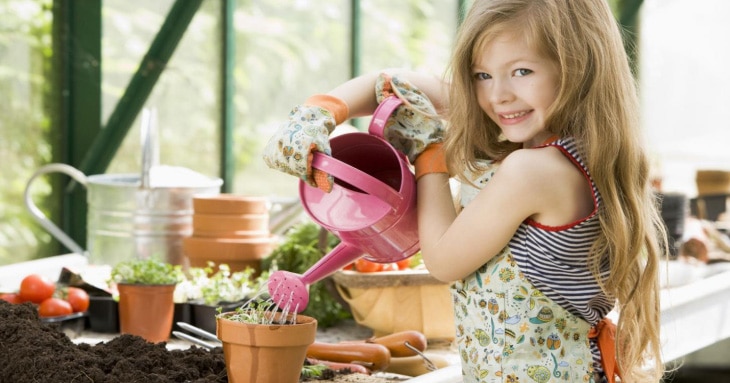
Plants need more care and water when they are little, so keep that in mind!
Have you ever noticed that when your pots get very dry, the water just seems to float on top of the pot without going into the soil? Sometimes, it trickles down the inside of the pot, but if you feel the soil, only the surface is wet and the rest is bone dry.
Organic potting mixtures repel water if they become too dried out. You can buy a special ‘wetting agent’ but it’s just a waste of money. Use a few drops of dish washing soap in the water you give you plants. Water once, let your plant stand for a few minutes, and then water as normal.
Smaller pots can be immersed in a tub of water or the kitchen sink, allowing them to absorb the water gradually from below.
Pretty pot ideas from junk
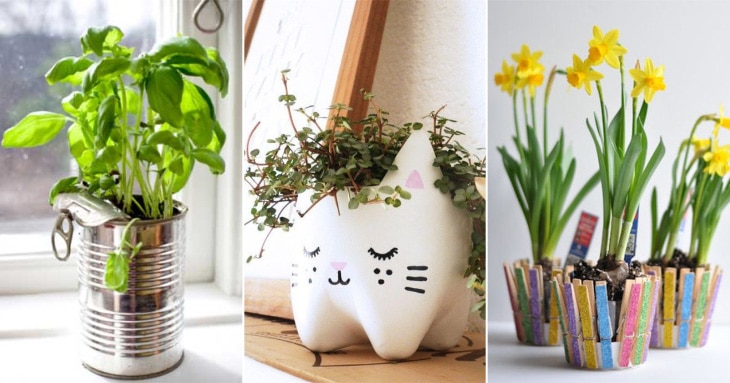
Turn your trash into amazing flower pots!
Instead of buying ceramic pots to display your plants, get creative with junk. Chipped or cracked mugs or bowls make great plant pots, but be careful with watering as they have no drainage.
Ordinary food cans make super ‘rustic’ pots. Be careful to smooth off the sharp edges where you opened the can. You can either punch a few holes in the bottom of the can for drainage or leave the can as is and just be careful with your watering.
With a bit of creativity, the bottoms of old plastic drinks bottles, old yoghurt tubs – just about any container – can be transformed into a pretty décor item. Cover the container with cloth, hessian, kitchen foil or an attractive foil or plastic coated gift wrap.
With a bit of imagination, just about anything can be turned into a pretty plant pot!
Pin it for later:

